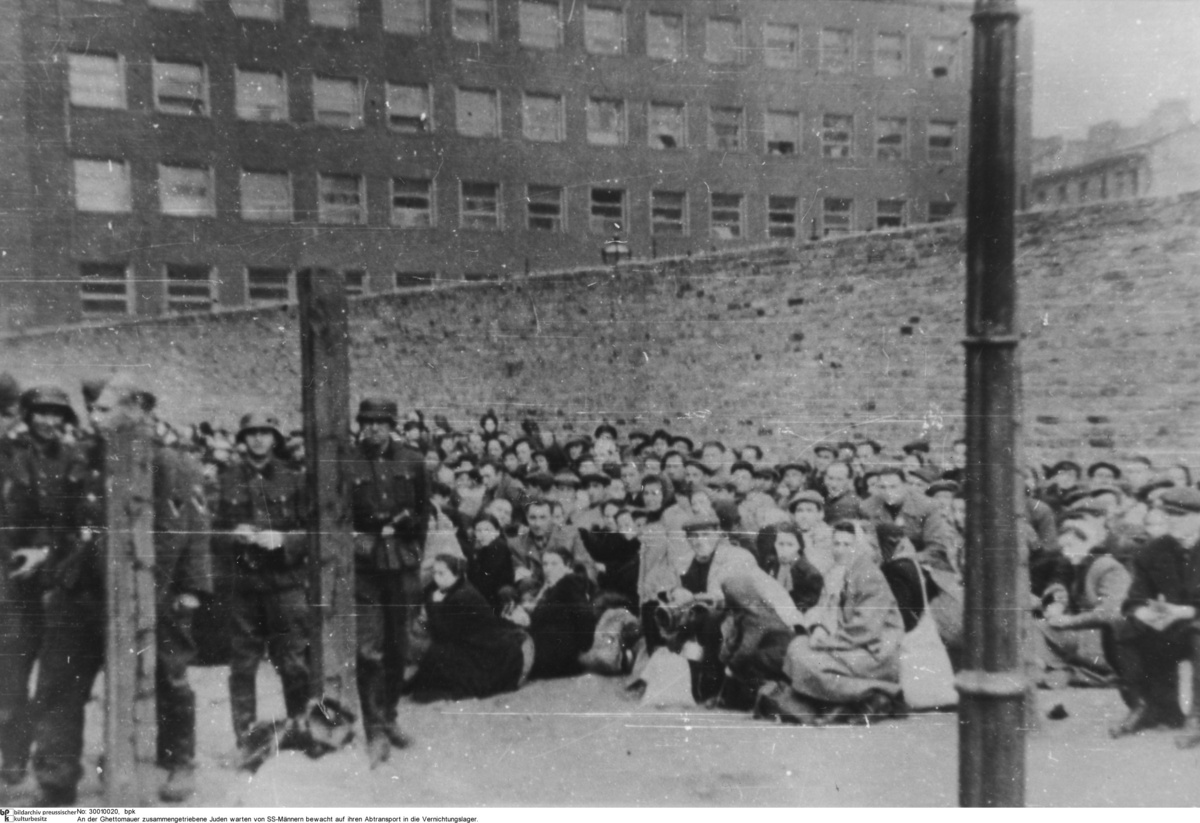Abstract
The period between July and September 1942 saw mass deportations of
Warsaw ghetto inhabitants. In light of these deportations and the
foreseeable evacuation of the rest of the ghetto, Jewish resistance
fighters established the Jewish Fighting Organization (ŻOB), while
right-leaning Zionists formed the Jewish Military Union (ŻZW). When the
SS and the police launched a new deportation campaign on January 18,
1943, they were confronted with armed Jewish resistance for the first
time. Although approximately 6,500 ghetto inhabitants were captured,
deported to Treblinka, and murdered there, the resistance did manage to
halt the deportations, at least temporarily. As part of a so-called
“large-scale operation” [Großaktion]
ordered by Ferdinand von Sammern-Frankenegg (1897-1944), leader of the
SS and police in Warsaw, plans were made to clear the entire ghetto in
April. At the start of the operation, Sammern-Frankenegg was replaced by
Jürgen Stroop (1895-1951). According to estimates in the Stoop Report,
roughly 12,000 to 13,000 Jews were killed during the suppression of the
Warsaw ghetto uprising (April 19 to May 16, 1943). Around 50,000 ghetto
inhabitants were captured during the operation and deported to various
death and extermination camps (7,000 to Treblinka, and around
15,000-18,000 to Majdanek). Others were sent to labor camps, especially
Poniatowa and Trawniki.
